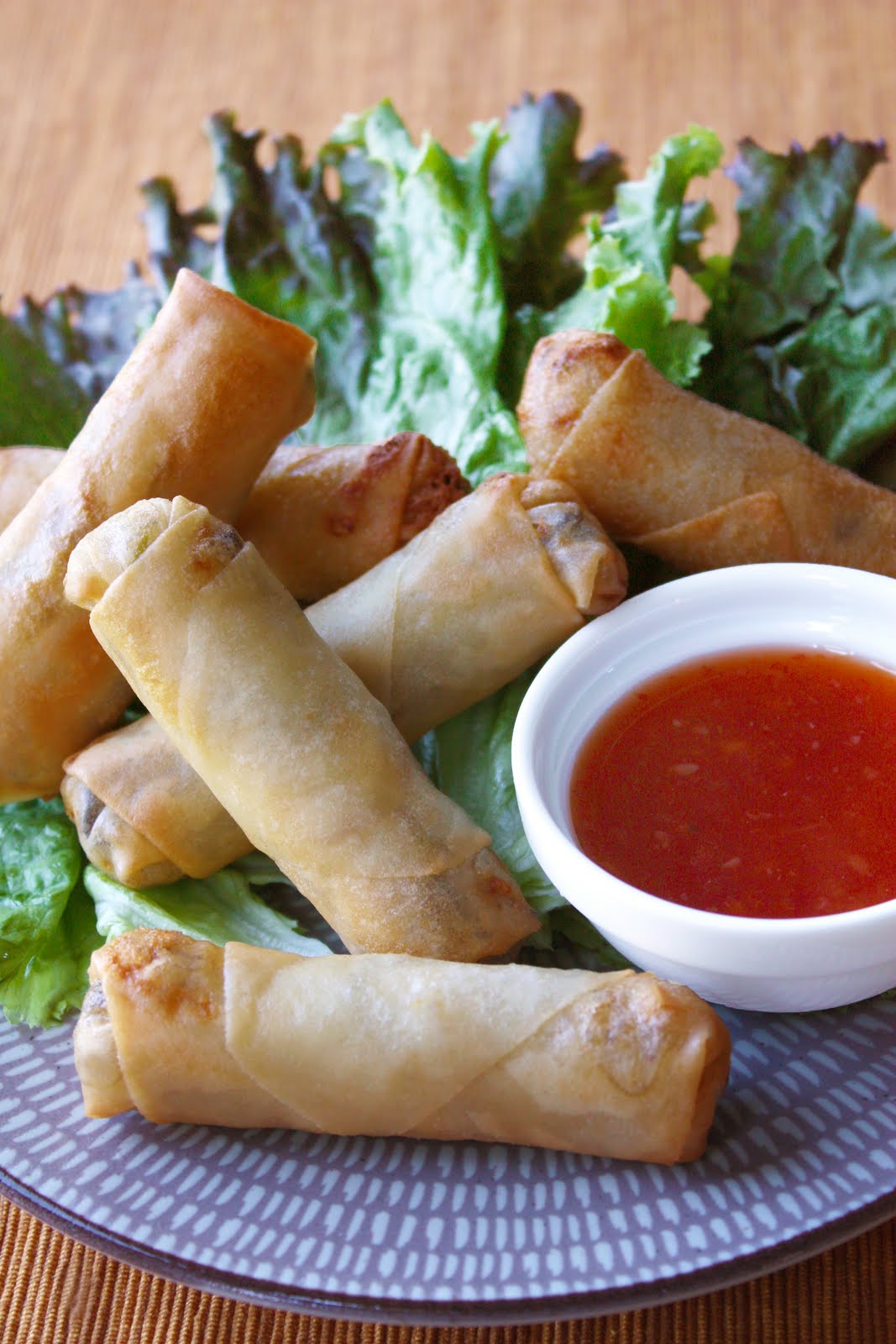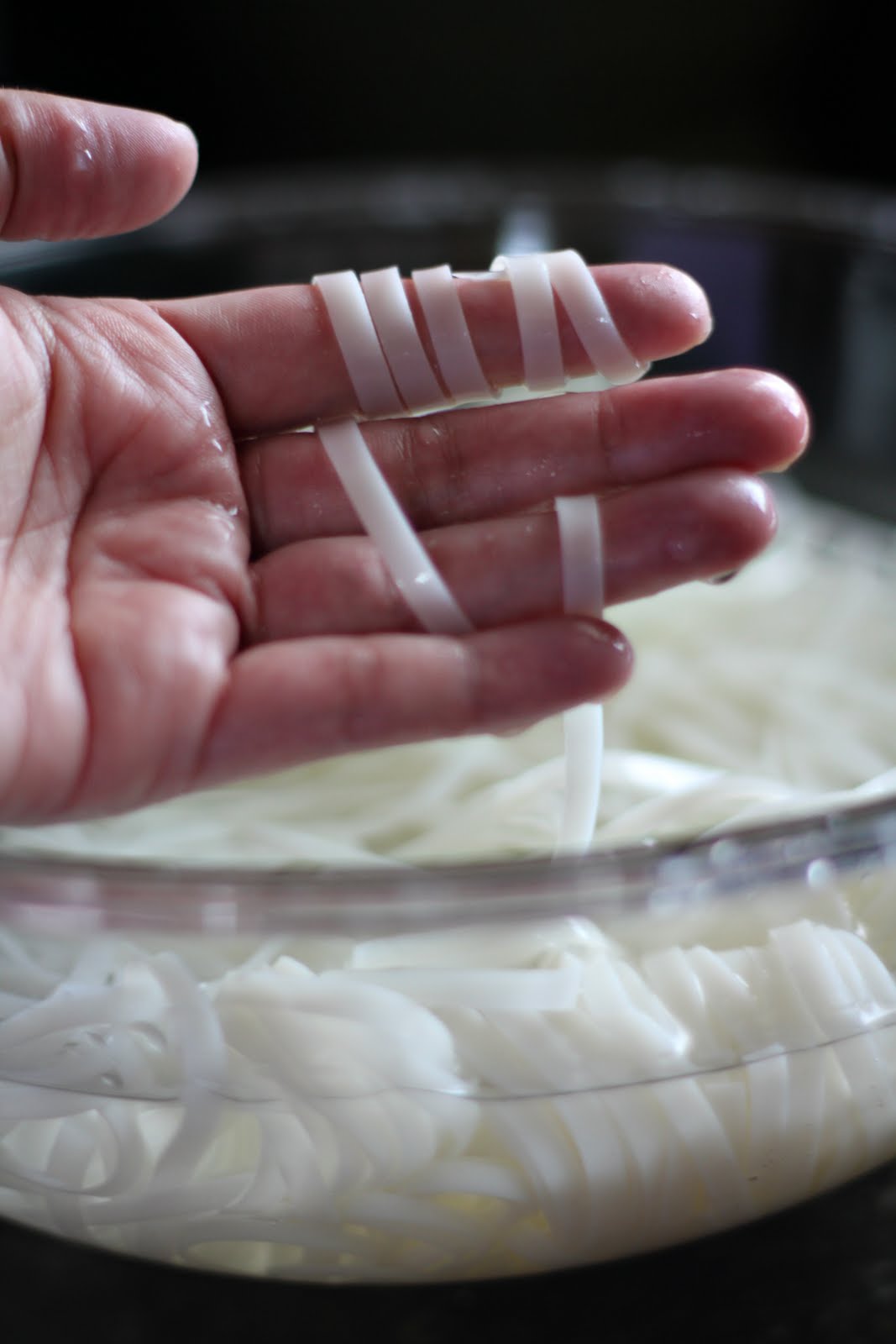
Recipes for these fried spring rolls (Po Piah Tod[1] ปอเปี๊ยะทอด) vary so greatly that you’re not likely to find two family recipes that are identical. It’s fairly safe to say, though, that the ones most commonly found in the central part of Thailand usually contain glass noodles or mung bean threads (wun sen วุ้นเส้น), bean sprouts, and wood ear mushrooms. This recipe from my aunt’s kitchen is quite typical in that way. What I love the most about her fried spring rolls – something I don’t always find in other versions – is the aroma of the quintessential garlic-cilantro root-peppercorn paste.
Good spring rolls must taste good on their own, in my opinion. Poorly-made, bland fillings that exist just to live off of the charisma of crispy spring roll skins and flavorful dipping sauce are too underachieving to be worth the calories.
Yes, I’m looking at you, cheaply-made $6.99 lunch special spring rolls, stuffed to the gills with cabbage-heavy filling whose raison d’être, apparently, is to keep you tubular. Continue Reading →












